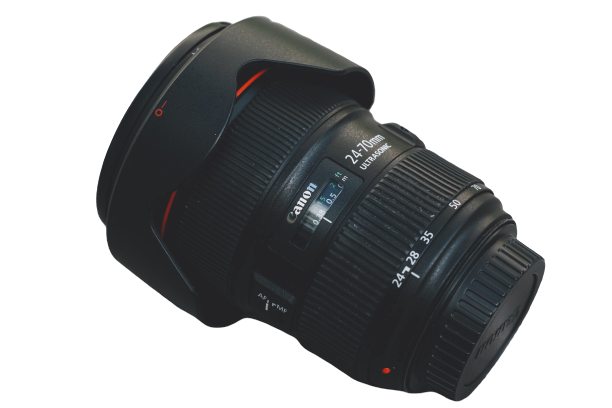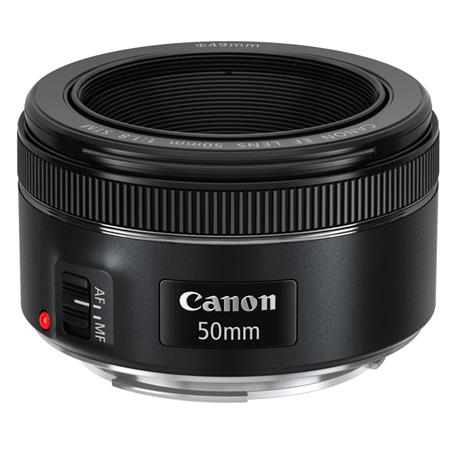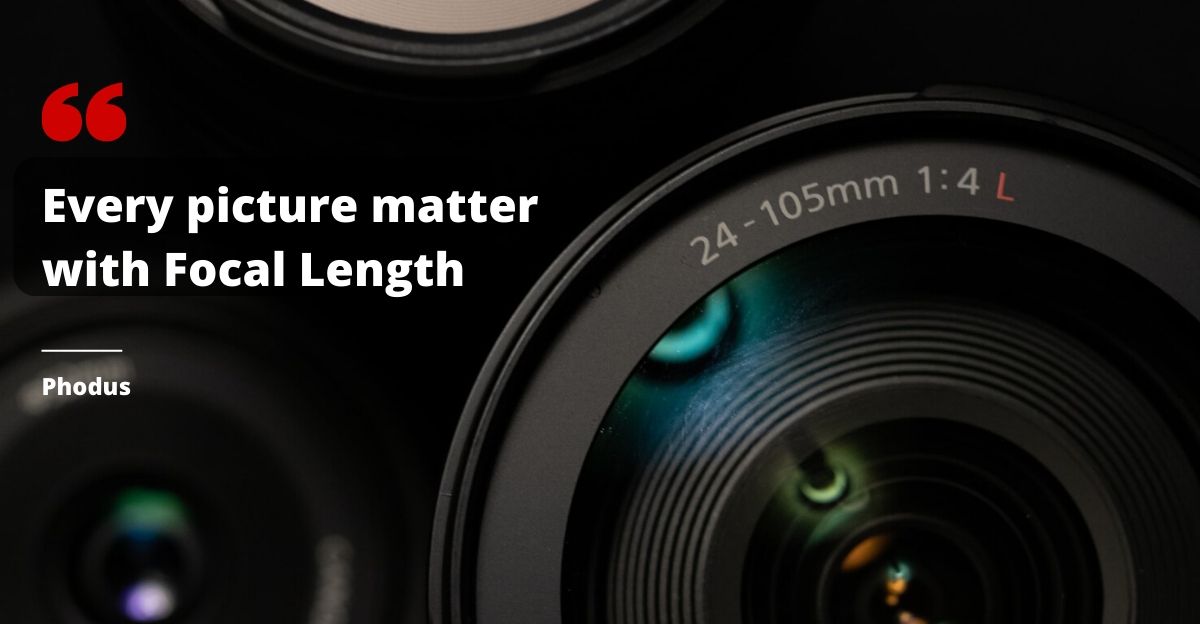What Is Focal Length In Photography?
Focal Length in photography is as important as your eyes to your brain. Can you imagine a picture without a lens? Definitely Not. It is the integrated process of the camera sensor and the lens that forms an image.
Likewise, the focal length is one of the vital characteristics of the lens. Which plays a significant role in producing high-quality pictures.
You must have heard it’s the lens that matters more in photography. When it comes to growth and developing your skills. It is because of the focal length that matters.
You often have heard the lenses are called as numbers 50mm,24-105mm, and so on. Initially, you have not bothered about it. But it’s the focal length of the lens.
Here in this article, I will make you understand about focal length. It types and also the types of lenses available in the market.
So let’s dive in.
What is Focal Length?
The focal length is the major feature of the lens. It is the distance between the image sensor and the focal point in the lens. When the subject is in focus. It is measured in millimeters. For example 24mm and 35mm.
Thus we identify the lenses with the length of it in millimeters. Like 50mm lens, 70-200mm lens, and so on. You can find the focal length mentioned in the lens.
Let us break it down.
The focal point in the lens is the point where the image is formed. It is the point in the lens where the image is sharpest. It is also called an Optical center. The point is also called the Imaging point. Where the image is more clear and sharp.
The lens is not made up of single glass. It is made up of many glasses and elements. The elements in the lens help to focus the light. To form a sharp image. So there is an optical center. where the convergence takes place and the image is being captured in the sensor.
Final word:
“ Focal length is the distance between the optical center of the lens and the image sensor. When the subject is in focus.”
Beginners are often confused and misguided. That focal length is the length of the lens from its initial point to the endpoint of the lens. Which is incorrect.
The longer the focal length the longer the lens will be physically. The shorter the focal length, the shorter the lens will be physically. It affects the angle of view.
Let’s check out this word for better understanding.
The angle of view or Field of View
The amount of area of the scene that the lens can see and capture is called the angle of view. Also known as Field of view.
When the focal length changes the angle of view also changes. The wide-angle lens has a large angle of view and shorter focal length. The longer focal length lens has a short angle of view and the image looks more close.
Types of lenses
There are two types of lenses. Further, these two have classified into many more types based on their focal length. Which we will discuss later on in this article. For now, let’s check out the two types of lenses.
They are:
- Zoom lens
- Prime lens
Zoom Lens
Zoom lenses have variable focal length. It means you can change the focal length by zooming in and out under the given length. It is done by rotating the lens ring clock and anticlockwise.

Thus, it is also called a Variable lens. It is used to capture far away subjects. Also when you want a very small portion of the scene to capture. It is best used in wildlife photography.
Physically the lens is longer than the prime lens.
Prime Lens
Prime Lenses have a fixed focal length. Fix means you cannot change it. These lenses are also known as a block lens or fixed lenses. It is lightweight and shorter physically.
Prime lenses generally come with the fastest aperture. And you can capture sharp images. It helps in low light conditions and also to capture creative shots.

A prime lens is best for portrait photography, landscape photography, and commercial photography.
Types of lens based on focal length?
- Wide-angle Lens
- Standard Lens
- Telephoto lens
- Super Telephoto lens
- Macro lens
Wide Angle Lens
The lens which can cover a wider part of the scene is the wide-angle lens. It has a wider angle of view. It comes in a prime lens and zoom lens both. It is very short in focal length with a prime lens. The focal length varies when it’s with a zoom lens.
For example, 18mm is a wide-angle prime lens. 18-55mm is a wide-angle zoom lens. Here the focal length changes.
The best examples of wide-angle lenses are14mm, 35mm, 24mm. This lens is the best use for capturing wider scenes. Like landscape photography, Interior Photography, etc.
Standard Lens
Standard Lens is a very popular lens among photographers. As this lens is very close to the human eye. In terms of the angel of views. The amount of angle we can see in the scene is what the standard lens can also see. Or pretty close to that.
This lens produces minimum distortion. Which creates a very detailed image. They have large apertures. Which allows them to perform amazingly in low light situations. That’s why these lenses are called fast lenses.
This lens also creates a shallow depth of field. Which helps in to do creative photography. The aperture is between f/1.4 to f/1.8.
This lens is very popular among portraits, photography, nature, and low light situations.
The standard lenses are 35mm, 50mm, and 60mm.
Telephoto Lens
Telephoto lens is basically for capturing faraway subjects. It always comes with a zoom lens. The most popular telephoto lenses are 70-200mm. which is used for portraits photography, wildlife, and wedding photography.
You can capture a close shot of the subject. Like in wedding photography you can capture candid shots while disturbing the subject.
You can also capture a close headshot without informing the subject. That’s the benefit of telephoto lenses.
The best examples of telephoto lenses are 70-200, 55-250mm, etc.
Super Telephoto Lens
These lenses are popular among wildlife photography. Where the subject is very far away. Also in sports photography. In such a situation the photographer cannot get closure to the subject.
Thus super-telephoto helps them to capture the best of its technical features. In Extreme wildlife photography, you cannot get close to the animals. Either they will run away or will eat you up. The choice is yours.
So to capture very long-distance subjects. you will need a super-telephoto lens.
Have you watched soccer, baseball or football in the stadium? You must have noticed photographers with damn heavy and long cameras. Those are the telephoto lenses to capture the events.
The best example for a telephoto lens will be 200-600mm 300-600mm etc.
Macro Lens
Macro Lens is made to capture tiny subjects. Like insects, small products, flowers, and more. These lenses have a specialty to get closure to the subject. Also used in close up photography.
Macro lenses come with sharp image features and it also has a fast aperture. Which helps in creating a shallow depth of fields. You can isolate the subject by getting close and using the fast aperture.
You must have seen it in most of the cases of insects and flower photography. Where the insects are isolated by blurring the background. The viewer’s attention directly goes to the insect.
The best example of a Macro lens will be 65mm, 105mm, and 200mm.
There are few more lenses based on focal length like:
- Ultra-wide/Fisheye lens
- Short Telephoto lens
What is an Effective focal length in Photography?
An effective focal length also is known as equivalent focal length. or equivalent 35mm focal length. When we compare the focal length of some other camera sensor. With the focal length of a full-frame camera i.e. 35mm sensor. To keep an equivalent angle of view.
You can say it is the benchmark to equate the focal length with a full-frame camera. To get the same field of view. In photography, a full-frame sensor is considered as a benchmark. Because most of the industries are familiar with 35mm sensors. Like film making.
There are different types of the image sensor. The full-frame sensor is larger than the crop sensor. The difference between these sensors is crop factors. That is the differential value of the size.
So the crop sensor does not affect the focal length of the lens. It affects the angle of view. And to fix it comes the role of effective focal length. If you use the 50mm lens in crop sensor APS-C and Micro sensor. The focal length will be the same only the effective focal length will change.
Now here comes the role of effective focal length. Where you compare the focal length in terms of a full-frame camera. And equating it to the crop sensor to get the same angle of views.
For example
If you use a 5 D mark IV full-frame camera to click a picture with a 24-105mm lens at the focal length of 60mm.
Now when you click the same image with the same perspective with different crop sensors. The angle of view will be different because of the crop factor of the sensor not because of the focal length.
Say you Use APS-C crop sensor camera with 1.5 crop factor. With the same lens 24-105mm at 60mm focal length. The field of view will be different. Now to get the same field of view multiple the crop factor with 60mm. That will be 90, so the effective focal length will be 90mm.
That will keep the same angle of view on both the cameras.
Conclusion
You have learned about the focal length of photography. We have also talked about its types and how it affect your photographs. If you are still confused about anything and find it difficult to start.
Dont worry, just remember these few things about focal length and it will be easy for you to improve your skills.
- Long focal length has a short angle of view with close up to the subjects.
- Short focal length has a wide-angle of view with sharp images.
If you still have any questions. Then, feel free to comment below. I would love to hear it from you.
Here is a complete beginner’s guide to photography:
- Exposure in Photography
- Shutter Speed in Photography
- Aperture in Photography
- ISO in Photography
- Camera modes in Photography
- Metering Modes in Photography
- Histogram in Photography
- White Balance in Photography
- Depth of field in Photography
- Focus in Photography
- Composition in Photography
- Rule of Thirds in Photography
You may like this. If you want to grow as a photography:

